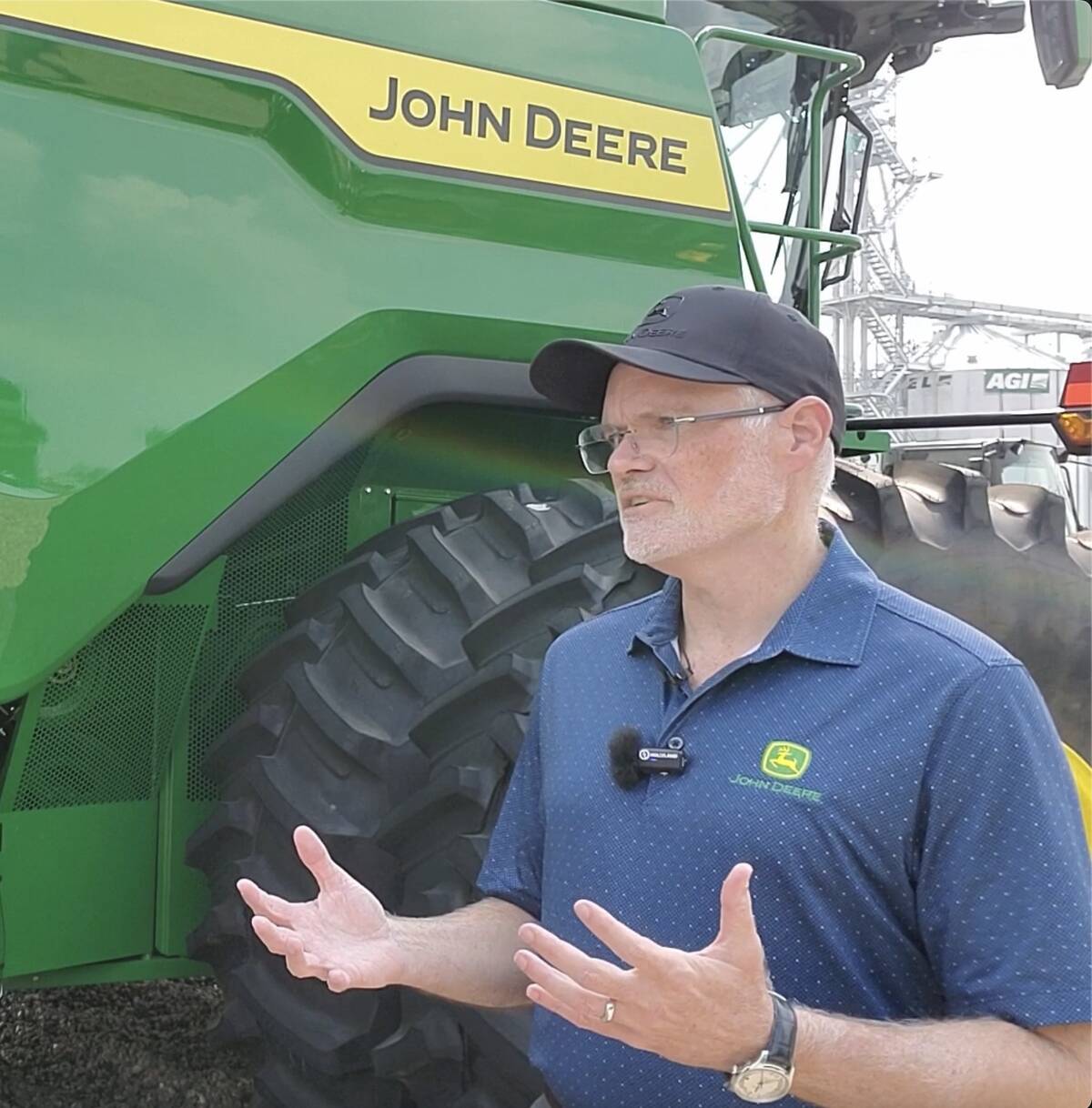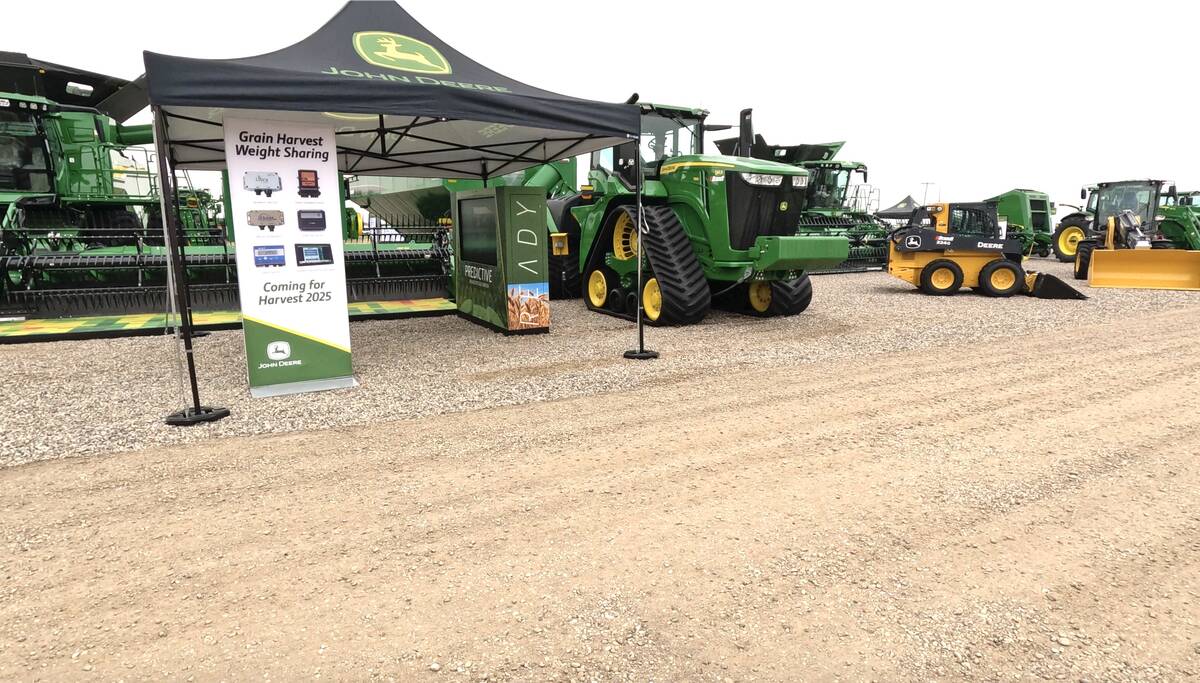Farmers in the market for a new piece of John Deere equipment can be assured that the current trade dispute won’t interfere with their ability to take delivery of the machine they want, says the company’s vice-president of production systems.
However, the disruption to trade caused by the U.S. president’s passion for fluctuating tariffs will likely make that machine more expensive.
“We’re living in very uncertain times right now when it comes to the tariff situation,” Aaron Wetzel said last month while attending the Ag in Motion farm show near Langham, Sask.
Read Also

House ag committee to undertake several studies
The House of Commons standing agriculture committee has set its agenda for the coming months. Members began the fall sitting with a two-hour update on international trade
You can find all our Ag in Motion coverage here
“We’re watching that situation on a daily basis to understand what will be implemented on a permanent basis.
“We have the majority of our whole goods and components qualifying for (the Canada- U.S.-Mexico Agreement), so that allows us to move our products across the border without tariffs.”
Even though machines heading to dealers’ lots can come north across the 49th parallel duty free, Canadian farmers will still feel the price impacts of U.S. tariffs. That’s because Deere’s manufacturing costs, like those of all other U.S.-based equipment manufacturers, are rising.
Raw materials and components needed to build a tractor, combine or other piece of equipment imported into the U.S. from a global supply chain face those tariffs, and that adds significantly to the cost of each machine.
In a first quarter earnings call to investors in May, Deere revealed tariffs could add US$500 million in before-tax costs to its manufacturing.
“As we see those impacts come to us, it’s more on the input side of manufacturing costs,” Wetzel said.
“We realize our costs are increasing to some degree, and we’re trying to offset those as much as we can, but realizing there will be some cost increases coming through in the future.”
Wetzel also emphasized that Deere has been focusing on introducing equipment directly suited to western Canadian small grains production in recent years. There are some differences in what farmers in Canada need compared to that favoured by the much larger corn and soybean grower market in the U.S. Midwest, which has tended to dominate the attention of ag equipment manufacturers in North America.
This summer, Deere had its largest exhibit yet at the Ag in Motion show, with a wide variety of ag and small construction equipment filling out its display.

“We’re super excited about being at the Ag in Motion show and the product portfolio we’re now bringing to growers in Western Canada,” said Wetzel.
”Over the past several years, we’ve been making tremendous investments in understanding the needs and challenges a western Canadian grower faces producing small grains. And we’ve put that into motion in terms of a new product portfolio.”
In the past couple of years, Deere has used the Ag in Motion show for the Canadian launch of its C Series air cart and very-high horsepower 9RX Series tractors.
“We’ve invested in what we call our LEAP Centre in Strathmore, (Alta.). There we’ve been working with customers to understand just what those (western Canadian) challenges are and develop actual solutions through that investment, like variable rate See and Spray that’s available now for customers in this market.
“We’re excited about the opportunities the small grains producer has and what Western Canada has for us.”


















